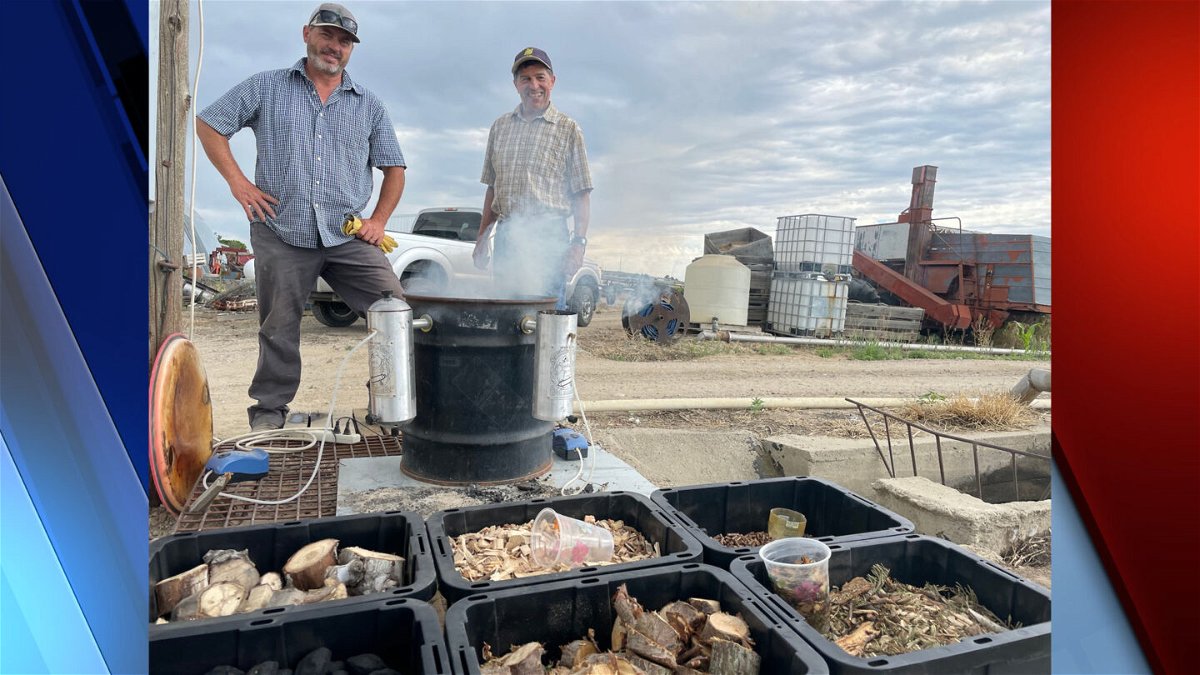Smoke exposure linked to smaller, misshapen potatoes, according to U of I, BSU study

MOSCOW, Idaho (KIFI) — Potato plants exposed to extreme smoke produced lower marketable yields than smoke-free plants, according to preliminary data from a joint University of Idaho and Boise State University study.
Results differed based on variety, with heavy wildfire smoke exposure being linked to smaller Clearwater Russets and causing more unusable and misshapen Russet Burbanks. The project involved pumping artificially emulated wildfire smoke onto potato plots covered by plastic.
The two-year study seeks to understand how prolonged exposure to wildfire smoke affects yields, crop quality and the chemical composition of potatoes. Project leaders Mike Thornton, a professor in U of I’s Department of Plant Sciences, and Boise State University Chemistry Department Chair Owen McDougal hope the research helps identify smoke-resistant potato varieties.
“As we look at these varieties, if we see some that are less responsive to smoke, growers and processors can start looking at using those long term,” Thornton said.
The preliminary data suggests growers who raise Russet Burbanks stand to suffer a greater economic hit due to smoke than growers who raise Clearwater Russets.
In Clearwater Russet, smoke exposure reduced the yield of potatoes greater than 6 ounces by 12%, with no change in the percentage of misshapen tubers. Smoke exposure did not shrink the size profile of Russet Burbank crops, but there was a 3% increase in tubers greater than 10 ounces becoming misshapen.
McDougal’s laboratory analyzed the spuds, as well as fries processed by the U of I Food Technology Center in Caldwell from the experimental tubers, immediately after harvest and will conduct another chemical analysis this spring following six months of storage.
McDougal’s chemical analysis found no difference in levels of asparagine — an amino acid crucial in the production of acrylamide, which is found in fried foods and may be linked to cancer — between smoke-exposed and untreated potatoes. He will also evaluate how storage of smoke exposure may affect potato reducing sugars, which contribute to darker and less desirable fry color.
“We’re also looking at storage and whether smoke exposure negatively impacts potatoes’ storage resilience,” McDougal said.
Thornton and his colleagues at the UI Parma Research and Extension Center burned a blend of hard and soft woods in a smoker and piped the smoke into potato plots under plastic covers for three hours each morning from July 11 to Aug. 18, removing the covers following the treatments.
Smoke levels in the experiment were far greater than levels that occur in nature, even during bad wildfire seasons, Thornton said. Plastic covers raised humidity by up to 20% -- enough to interfere with evaporative cooling of leaves -- and increased temperature by up to 9 degrees during late morning, which likely stunted the potato crops. When the team repeats the experiment this summer, Thornton plans to use shade covers to keep the temperature down and fans to circulate air, in part to control humidity..
Thornton also believes the study’s data could eventually provide evidence that smoke lowers potato yields and should be covered by crop insurance plans.
McCain Foods provided assistance and guidance with the project and assembled its research team.






